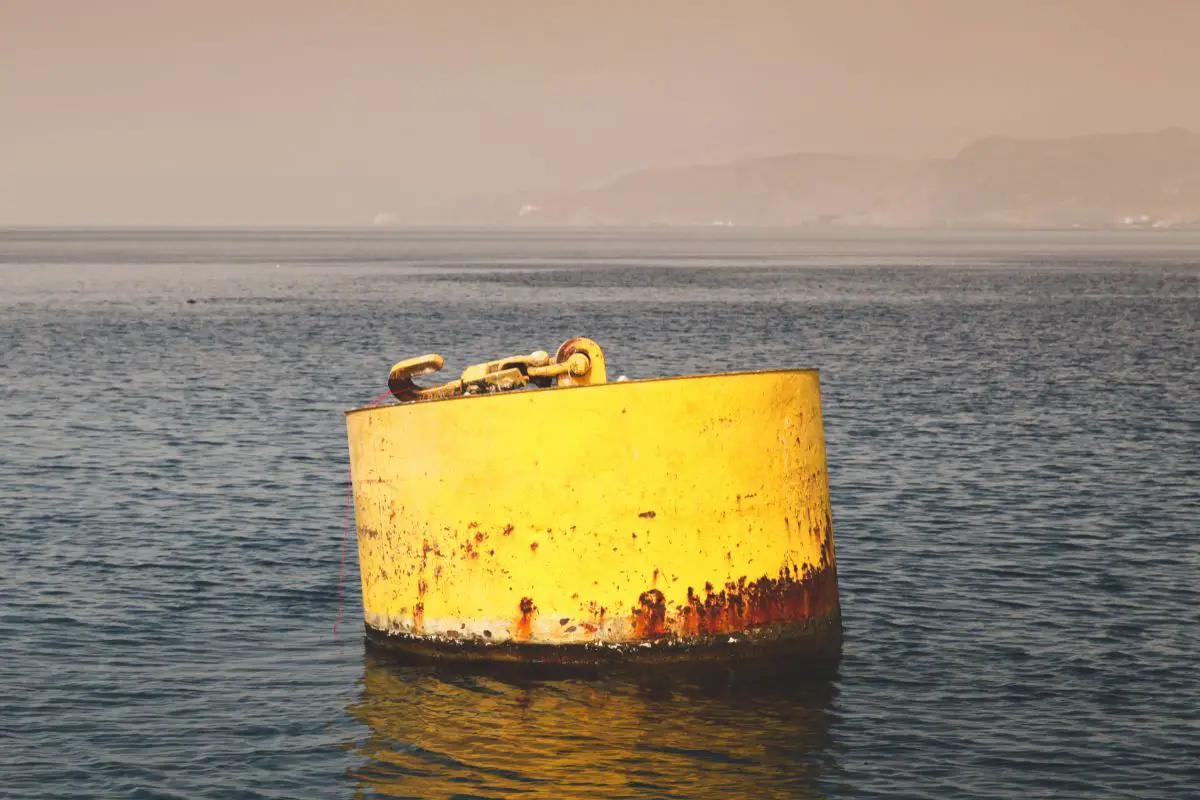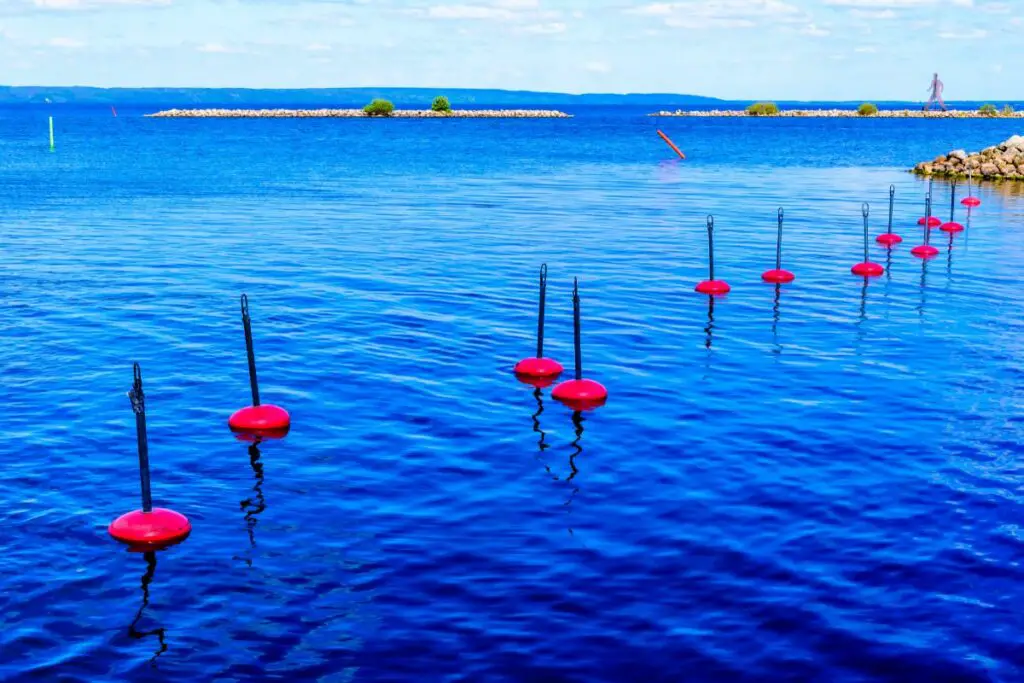When it comes to keeping those sea-worthy vessels from floating away from shore or docks, then nothing does the job quite like a mooring buoy.
It’s these little guys that are usually the difference between a pleasant sailing experience, and a ruined ship that has drifted off and crashed into a nearby reef or rocks.
However, for those who may not be as experienced with sailing or using boats, it can be difficult to understand how exactly you should identify the mooring buoy.
Especially when they can often come in all sorts of different shapes and colors! Well, that’s what this guide is here to help with!
We will not only explain what colors you can expect on a mooring buoy (the blue and white that you will recognize) but also why they are that color, as well as tons of other useful pieces of information regarding these humble flotation devices.
What Is A Mooring Buoy?
So, before we start diving into the waters of buoy colors and what they signify, it is probably establishing what the main functions of buoys are, especially when they are described as ‘mooring buoys’.
Well, as we’ve already referenced, mooring boys are the blue and white floating objects that boats of all kinds will anchor or attach themselves to stop them from floating away from their port of call.
How They Work?
The mooring buoy itself is usually attached to some kind of rope, which itself is attached to either a nearby dock or a heavy object that rests below the water.
You can see this for yourself.
When a mooring buoy is brought on to land or into shallows, the rope at the bottom of the device becomes visible.
Mooring buoys will also double up as a marker or markers within a harbor, to help shipmen determine the distance between points of interest around the harbor.
Types Of Mooring Buoy
As we mentioned, mooring buoys have to be attached to something out there on the waves. Otherwise, they’d float off with the rest of the boat!
- Anchor mooring buoys – These are some of the most common buoys that you will see out in harbors, and are ideal for indicating when boats may be approaching shorelines, to stop them from getting too close. They are weighed down by a solid metal object, with a light, plastic buoy floating directly above it. Filled with air, they will not sink lower than the water line.
- Mooring balls – These devices are much more likely to be found on watercraft than in harbors, and are used similarly to anchors. These buoys contain some kind of metallic base, which will be fastened to a rubber or plastic casing. These buoys can be dropped and attached to a mooring point to stop the boat from drifting away.
- Cone buoys – You’ll typically only find these kinds of buoys in fast-running waterways, such as rivers, made from cone-shaped metal. This helps indicate to boats what the speed of the surrounding waterway is, which is also why you’re unlikely to find these out or around sea harbors.
Identifying Issues
However, mooring buoys also come in a variety of shapes and sizes across the country and the world. Some smaller, spherical objects, while others, usually ones in busier waters or larger harbors, tend to be long and cylindrical.
Because of this, all mooring buoys being identifiable by color is critical for people that are looking out for them.
What Color Are Mooring Buoys?
As we’ve already briefly mentioned, mooring buoys are always predominantly white, with a thin blue stripe across the width of the buoy.
Different Colored Buoys?

You may have seen other kinds of buoys out on the water, such as red, green, or even striped black and white. If blue and white are used to signify mooring buoys, what are these other markers used for?
Well, this is often done to allow sailors to perceive them at different times of the day.
Remember, sailors are just as likely coming into port at sunset and night as they are in the middle of the day, so having buoys that can be registered and picked up is essential. It’s not uncommon to see boys made of red, yellow, or green colors too.
Other Buoys/Markers
Of course. Buoys are not the only man-made items that we have put out onto the water to help guide and moor us. There are quite a few objects that you should be aware of.
Lateral Markers
Do you know those green and red buoys that you’ll see occasionally floating out at sea? These are lateral markers and are there to indicate which way you are traveling to and from open waters.
- The green lateral marker should be on your starboard (right) side if you are going out towards the open ocean.
- Red lateral markers should be on the starboard (right) side if you are coming into a channel in the harbor.
When both of these directions are followed, the chance of any unfortunate collisions with either buoys or other ships stays low.
Regulatory Markers
These white and orange buoys are usually meant to signify different kinds of information to sailors and shipmen from a distance. Since they are all the same color, the shape of the buoy is the best indicator.
- A square usually means some kind of information for the helmsman (e.g. where to fuel up)
- A circle indicates that a ship is entering a restricted area, and should adjust course if they are not permitted.
- A diamond indicates Immediate danger to a ship or its crew, such as sharp rocks.
- A diamond/cross combination is a completely restricted area.
Is It Legal To Anchor Your Boat To Different Kinds Of Markers/Buoys?
Because the other kinds of markers that we have discussed need to be left untouched to indicate local hazards, it is illegal to moor or attach your boat to any other kind of buoy, stakes, flag, or any other device used to indicate navigational markers on water.
Closing Notes
So, as you now know, a mooring buoy will usually be blue and white, making it easy to spot in daylight.


